“A PASSION for genetics and strong focus on performance is how Ralph and Krissi Kuhn have built up their Angus herd”, writes Nicola Bell, Weekly Times Now.
“And while the past few years has been tough, with a bushfire burning 1619ha of their property in 2017 and then going in to drought, their focus on future proofing their operation has helped them maintain good numbers of cattle.
Ralph was a vet, a career he worked in full-time until the end of 2017, while Krissi was full-time on the property. They purchased their first property, Allambi at Coolah in Central West NSW in 1985. They then continued to purchase property when they could and their aggregation now totals 4170ha.
As each purchase has been made the focus has been to water, subdivide, pasture improve and erect necessary infrastructure on each block.
Originally running Murray Grey cattle, which in the 1980s were sought after by Rangers Valley for the long-fed Jap-Ox market, in 1992 Ralph and Krissi started performance recording 180 cows and heifers for the Beef Cooperative Research Centre program one.
When the trial finished they realised Angus were more suited to what they were trying to breed and as Rangers Valley feedlot at Glen Innes was pushing for more marbling, they introduced Angus genetics through artificial insemination. Allambi steers have been sold to Rangers Valley since 1987, so it was important to the Kuhns to move ahead with what the market was looking for.
Ralph said their focus has always been to breed cattle that are as good as they can be.
“Rangers Valley have certain specifications, so we are commercially driven and have a passion for genetics,” he said.
“I have always been interested in genetics. Some people have boats, we have cattle.”
BLACK MAGIC
THE Kuhns currently run 950 Angus cows and plant some forage oats crops each year. Numbers are down by about 300 in the past three years due to the fire and drought.
As finding the best genetics has always been a key focus for Ralph and Krissi, they were becoming frustrated with the expense of buying good back-up bulls and then after two years those genetics being too old.
So after a conversation with Richard Eldershaw from Rangers Valley in 2007, they joined Team Te Mania as progeny test herd.
“We had used some Te Mania semen previously and we were happy with the results, and it fitted for us,” Krissi said.
Team Te Mania is a partnership between Te Mania Angus and cattle producers to produce high quality beef cattle and collectively market through the Te Mania brand.
A progeny test herd means the herd is registered Angus Commercial Register and submit performance data to Breedplan.
Management requirements include: single sire mating; artificial Insemination, to ensure linkage with other Team Te Mania herds; female identification and joining dates; identification of all calves and recording birth date, weaning weight and post weaning weights.
Ralph said while progeny testing was extra work, there was a premium for the progeny.
“In times of trouble, like drought, flood, or oversupply of feeder steers, the progeny test status of these steers means we have preferential access to the market, which is intangible as you can’t put a price on it,” he said.
Krissi said they have definitely seen an improvement in intramuscular fat in their cattle since using Te Mania bulls.
Ralph added, it is also a lot easier to get to the weight gain.
“When we have had the opportunity to background steers of outside genetics in the same steer cohort as our own we have observed a 40-50kg advantage in our Te Mania bred steers.”
WINTER CHILL
CALVING is for nine weeks from July through August, with about 500 cows plus the heifers artificially inseminated using fixed-time AI. Bulls are leased from Te Mania for natural joining and as backups to AI.
The Estimated Breeding Value profile of the cow is matched with potential sires.
This year, they had an AI pregnancy test rate of 65 per cent for cows and 58 per cent for heifers, but in a better season it is usually about 67 per cent.
Ralph said by using young elite sires from Te Mania by AI, they can fast track progeny feedback from Te Mania resulting in higher accuracy EBVs by the time the bull is three or four years old.
“Because we select for high IMF a positive correlation to milk means we have to be vigilant for udder problems. WE also focus on sound structure with an emphasis on feet.”
By focusing on breeding steers for the long-fed market it has resulted in our cows becoming larger framed.
While they sold steers as weaners last year, they usually sell to Rangers Valley at about 500kg at 15-16 months old.
They grow forage oat crops to background the steers on before they are sold.
“The data we receive from both Rangers Valley and Te Mania analyses everything from feedlot performance parameters through to carcass kill data. From the feedlot’s perspective marbling is king and we are always monitoring our performance in this area,” Ralph said.
Most of the heifers are kept, they joined 250 this year, but the ones they don’t want to breed from are sold to slaughter, while an excess are sometimes sold to other producers.
“We had older genetics, so we are replacing them with heifers. The drought has helped us clear out numbers and older cows though,” Krissi said.
They recently sold 50 heifers on AuctionsPlus for 350c/kg. The calves are all yard weaned and bunk trained.
DRY ARGUMENT
THE average annual rainfall is 600mm, but Ralph said the only significant fall they had this year was 150mm in six hours on March 30.
“It’s timeliness meant we have got to November before having to feed.”
Ralph said they stopped feeding in October-November last year and hadn’t fed much, but some calves and cows as needed since.
They have 200 tonnes of crop as well as cotton seed and fodder on hand to start feeding.
“We try to position ourselves so if we have 900 cows in calf and can feed those OK, we can move forward quickly when it does rain,” Ralph said.
He said one of their strengths was the varied soil across their properties. It ranges from heavy self-mulching black flats, to red basalt as well as about 30 per cent lighter loam to sand country.
All of the arable light country is sown to permanent subtropical perennial pastures as they respond quickly to summer rain.
The heavier arable country supports a rotation of four years of forage crops and four to fives years of dryland Lucerne. They use a minimal to no-till system.
Water across the properties is all bore based and an observant monitoring system is used.
It means tanks can be monitored from an app and it relays information on water level and usage, or if there is a problem.
“Because we have property away from where we live it is prudent to be able to monitor like this,” Ralph said.
Looking to the future, Ralph said they were interested in how drone technology could make some management tasks easier.
“On hill country, we think drones could help with difficult terrain and the noxious weed issue. We have issue with things like St Johns Wart and we’d like to have a spray drone that could spot spray.”
But it’s something they would pursue once the season breaks.
Article by Nicola Bell, Weekly Times Now, 4 December, 2019
- Team Te Mania member since 2007
- Breedplan recorded: Angus Commercial Register
- EU accredited
- Calving period – Jul-Aug




